Possibilities for form, process, and mass user participation in computational architecture
New digital tools and computational techniques have contributed much to the architectural discipline. However, its applications have largely been in aesthetic transformations and economic optimisation. The methodologies in which architectural space is designed and inhabited have also found little change. The production of space still relys heavily on modernist axioms and Fordist production, especially in mass housing, where housing units are pre-designed and largely homogenous. And yet, the digital tools and techniques we employ today offer far more possibilities for customisation and variability than we are using them for.
To understand the latent potentials of computation in architecture, the research dives into the writings of academics and practioners such as Mario Carpo, Antoine Picon, Bernard Cache, Gilles Deleuze, Manuel Delanda, Neil Leach, drawing out useful concepts such as the Objectile, Genetic Algorithms, Discretisation, etc. Critiques of fundamental heuristics and axioms in contemporary architecture are explored, along with participatory design strategies such as John Habraken’s Open Building concept. Drawing from the research, this thesis proposes new heuristics and axioms, along with a computational workflow for the creation of Post-Fordist, heterogenous spaces suitable for our times.
A site in Tengah, Singapore was selected to demonstrate the thesis. Relationships between design actions, phenomena, and contextual data are assembled as Objectiles, that generate a wide variety of spaces that are highly contextual while using simple, orthogonal modular components. Digital twinning on a “support” platform allows users to make inhabitation decisions based on spatial data and analytics, collaborate with their neighbours and authorities in the design phase, and have a larger part to play in the process of spatial production.
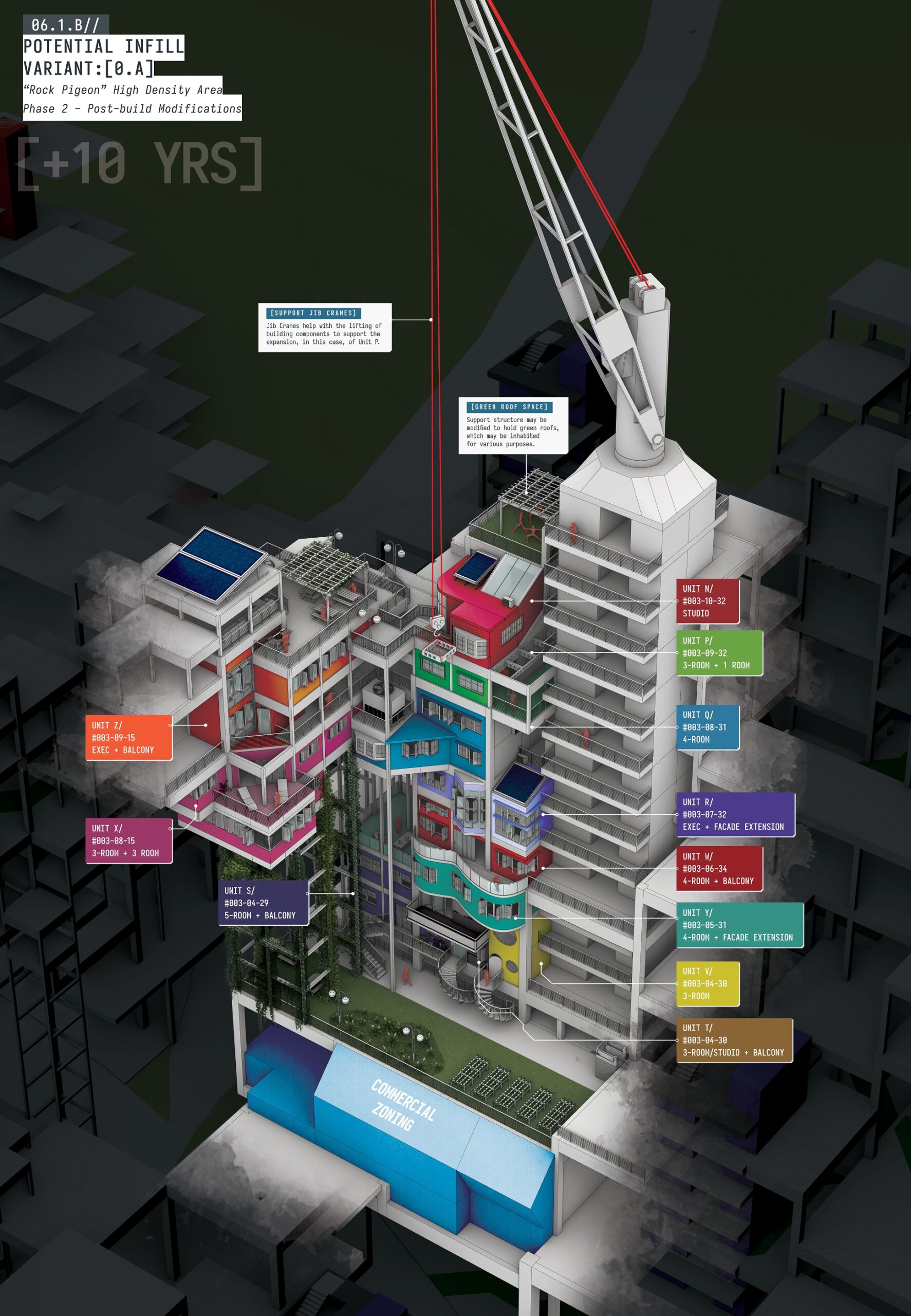
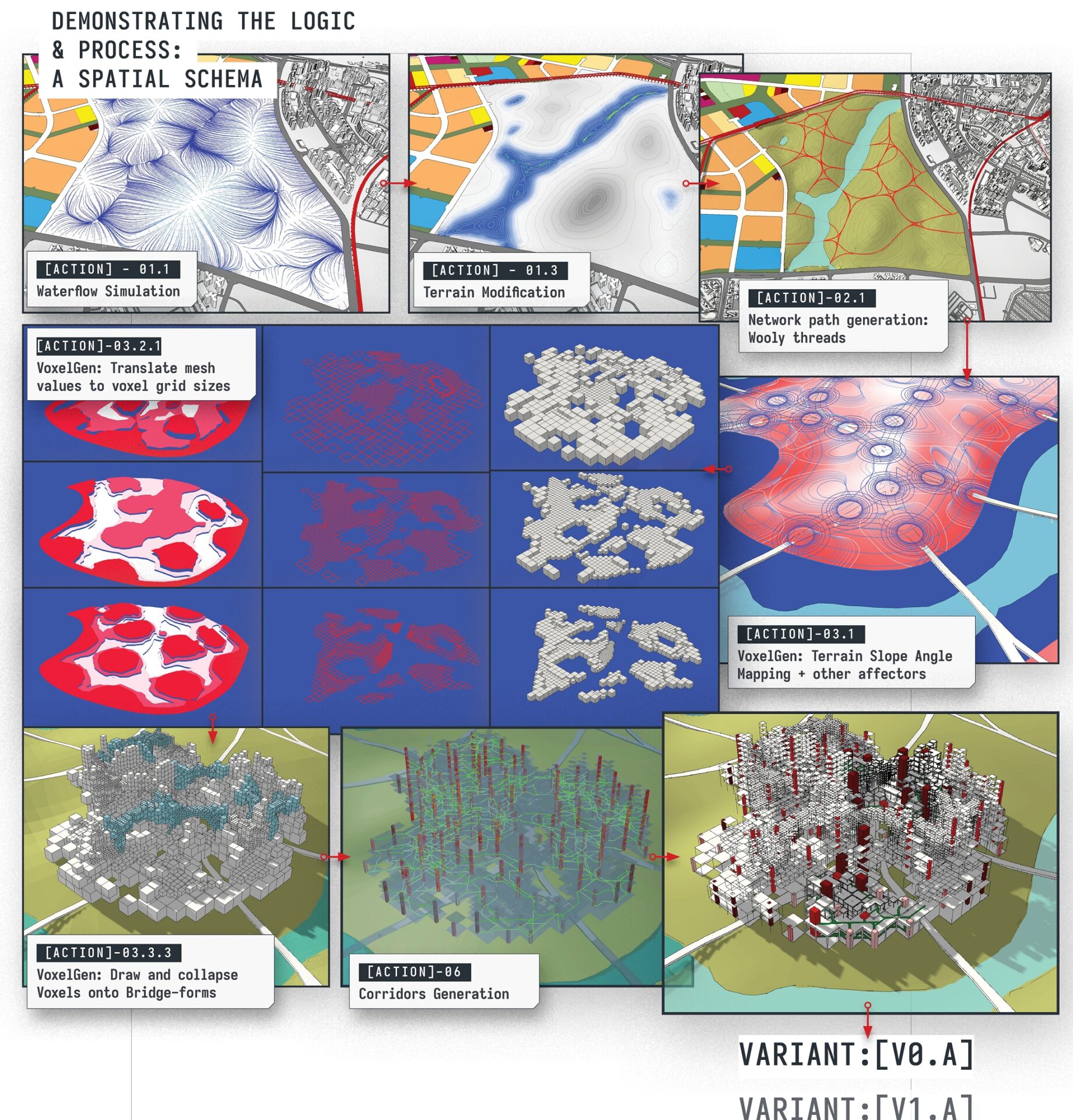
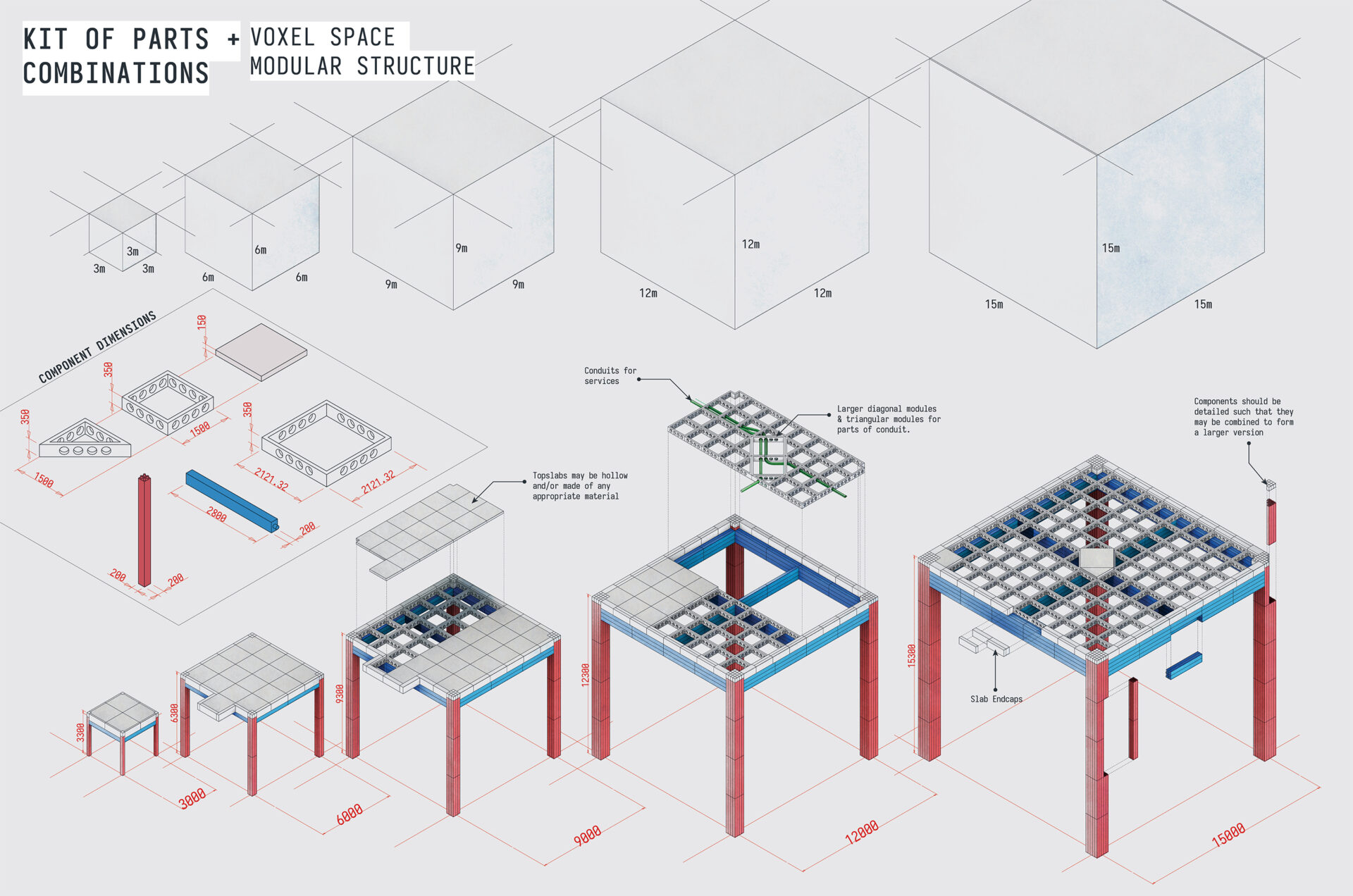
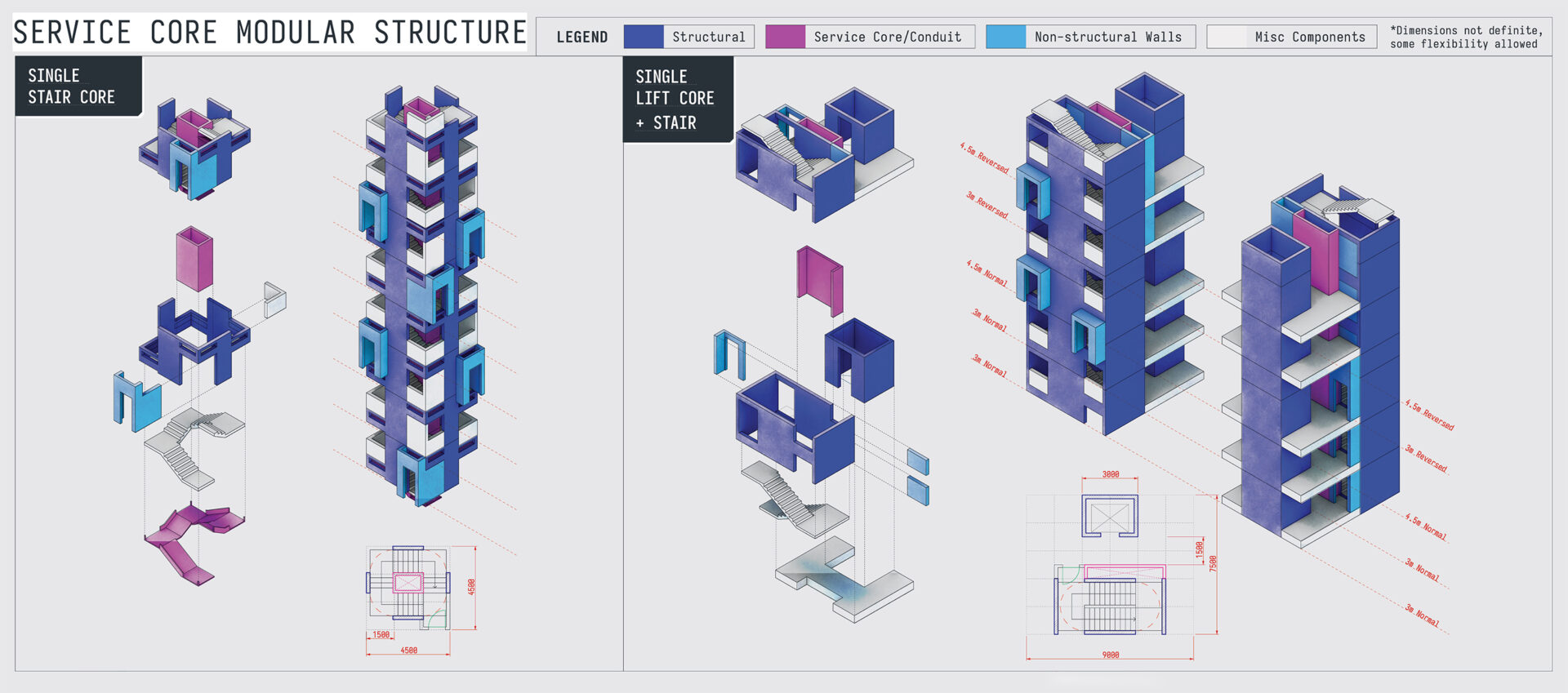
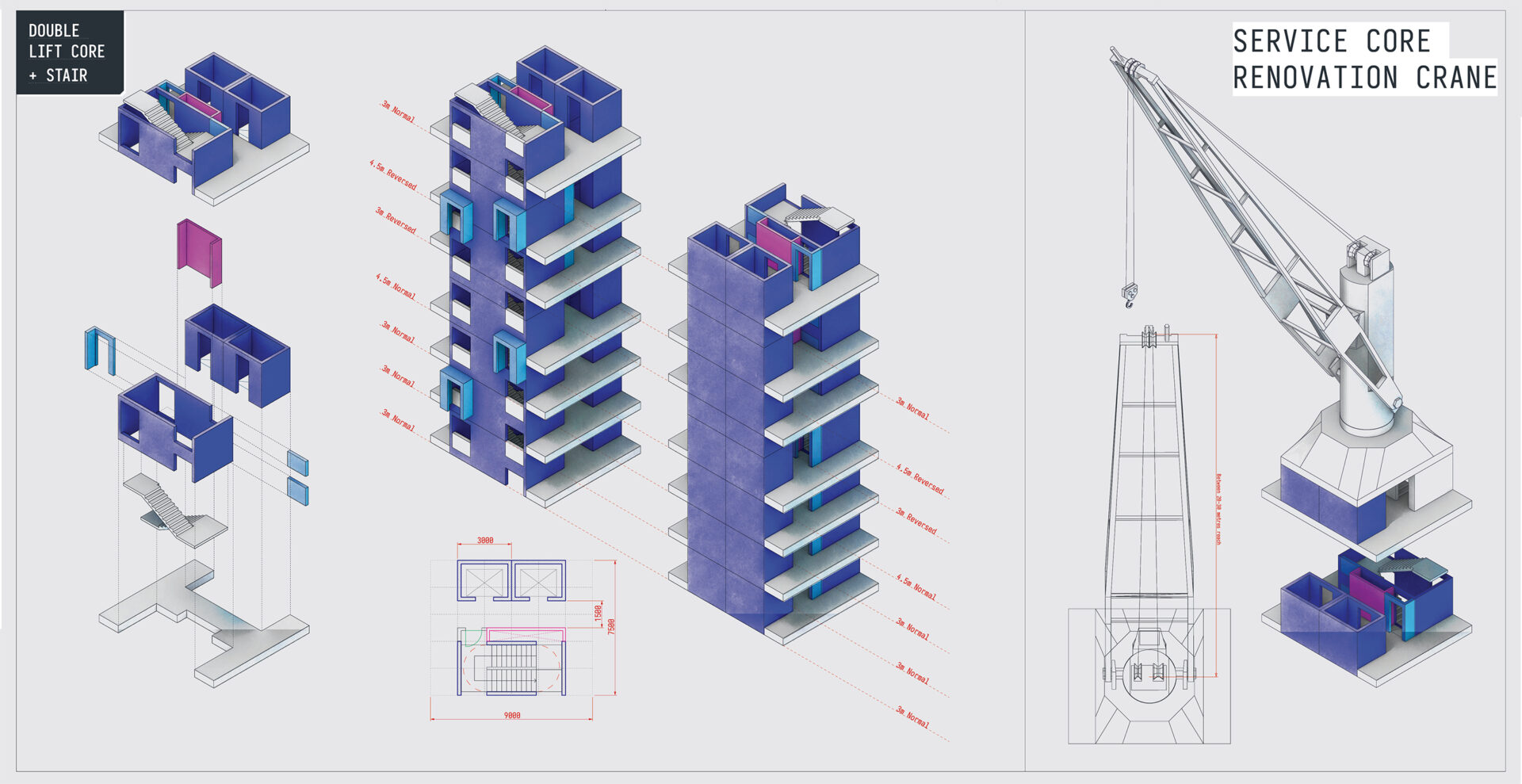
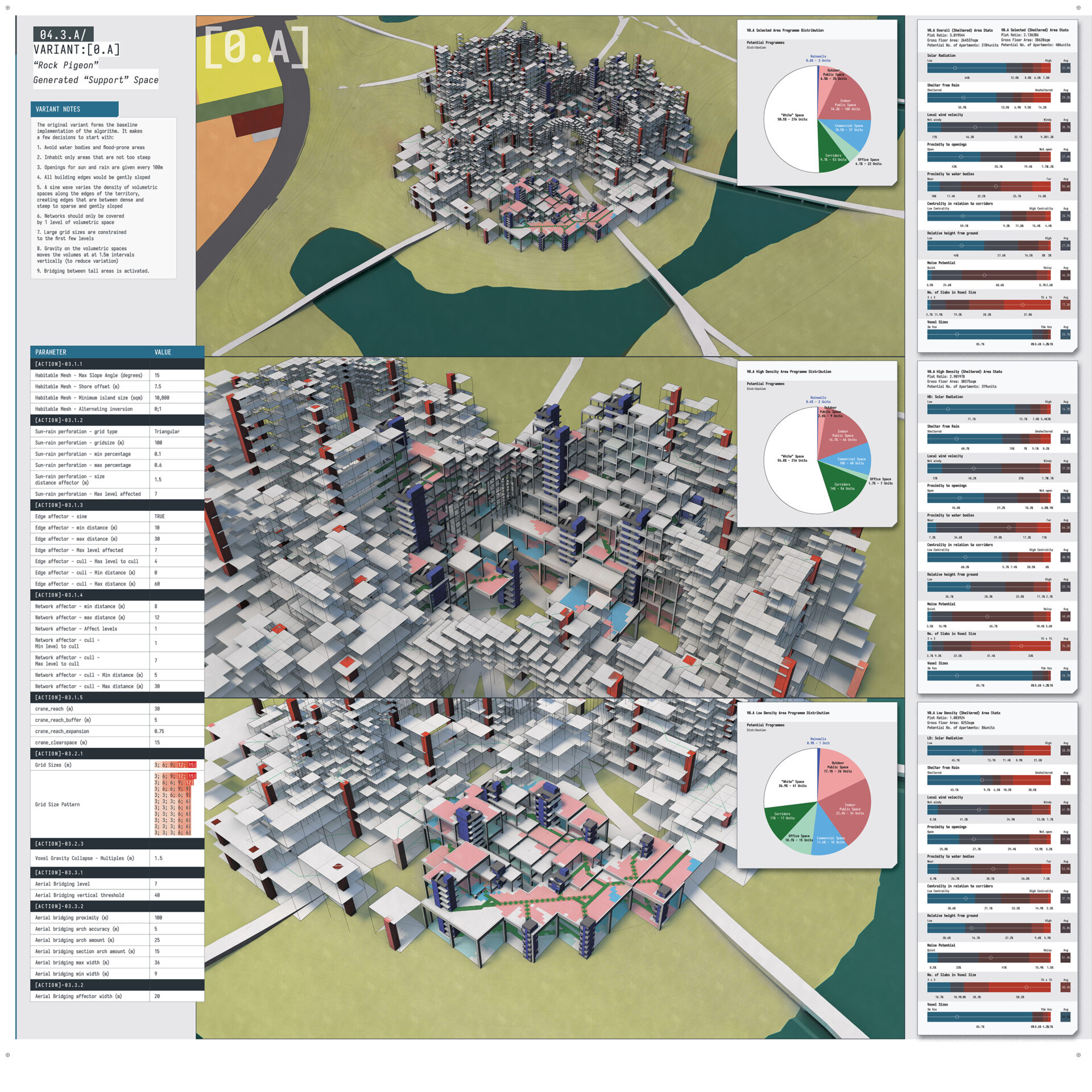
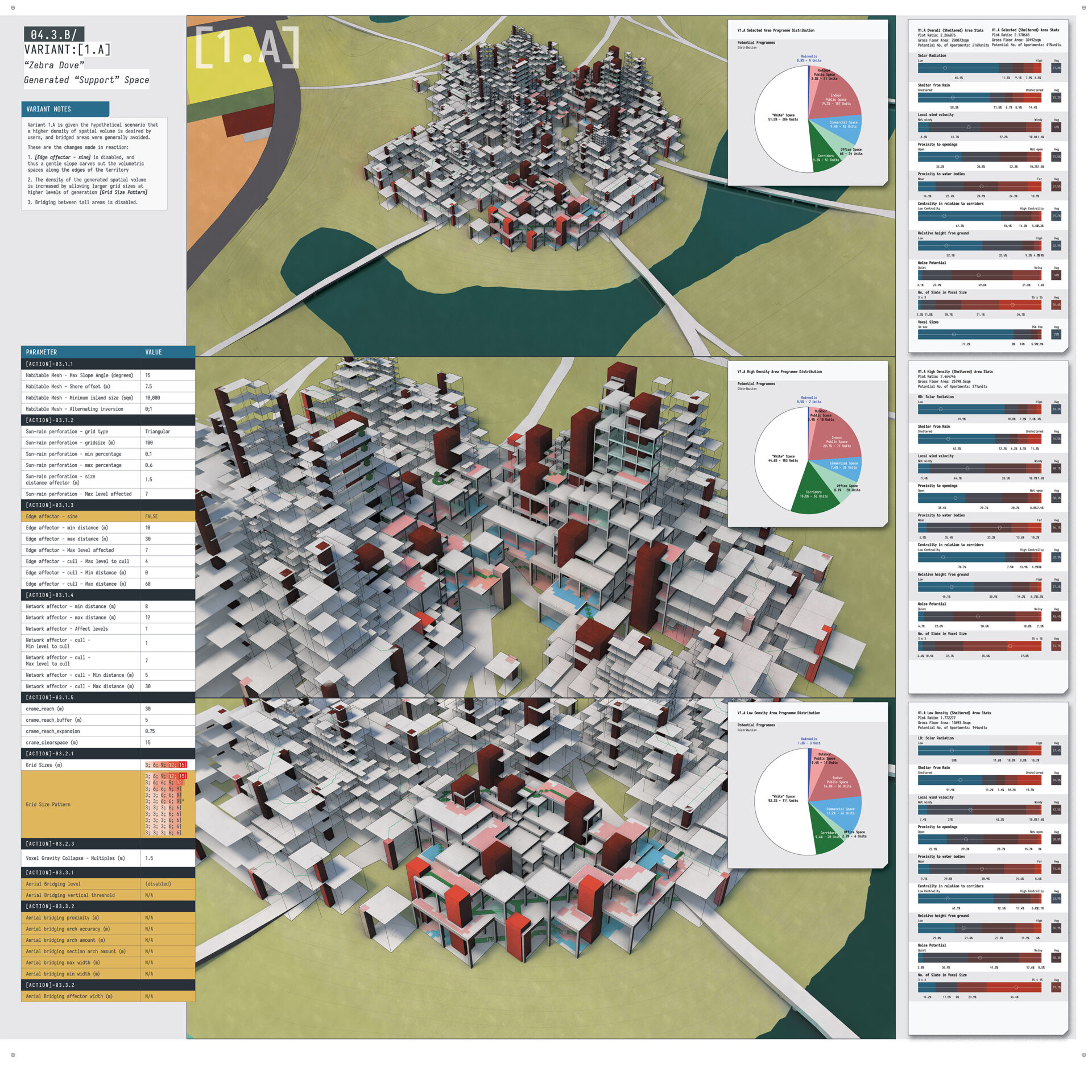
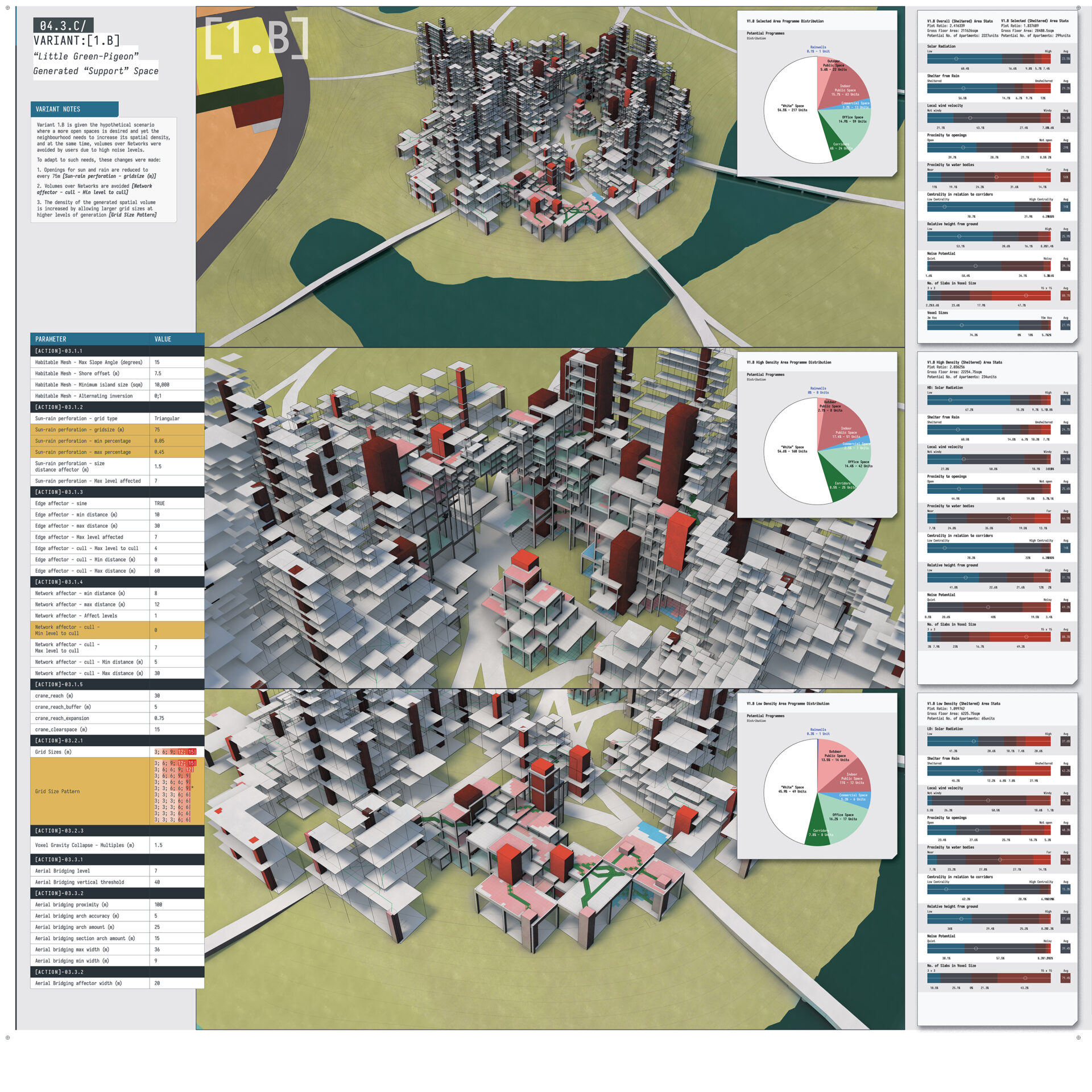
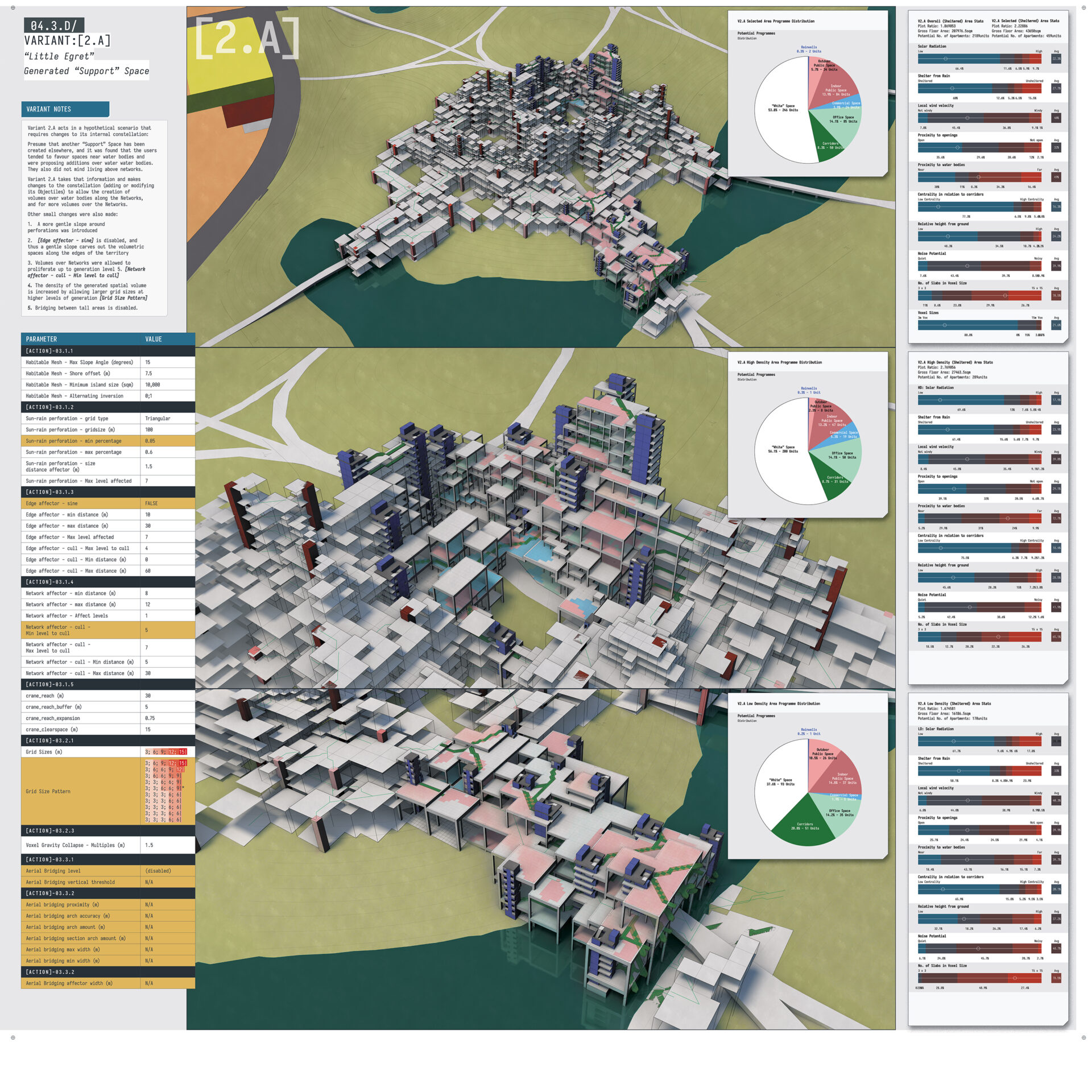
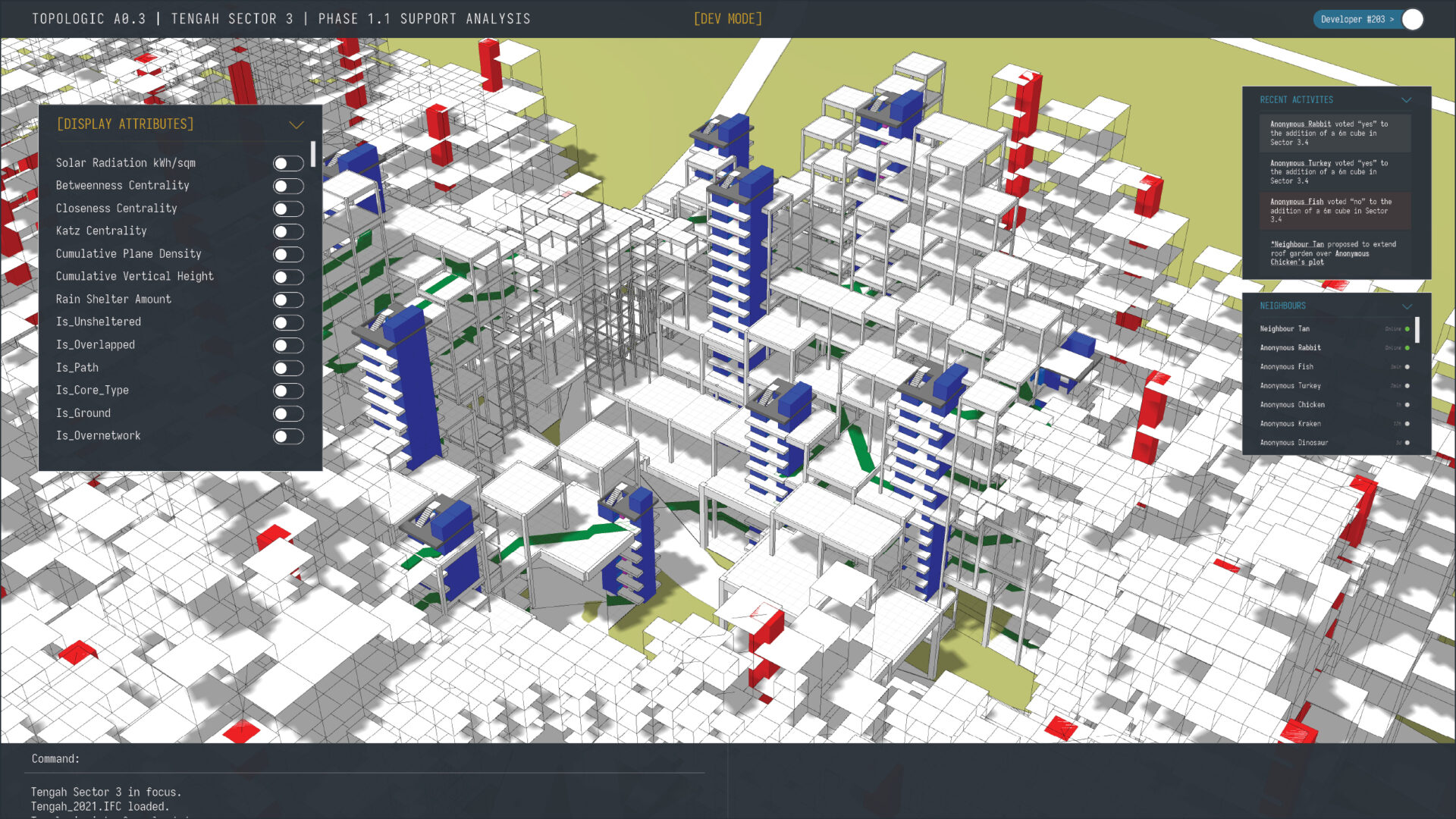
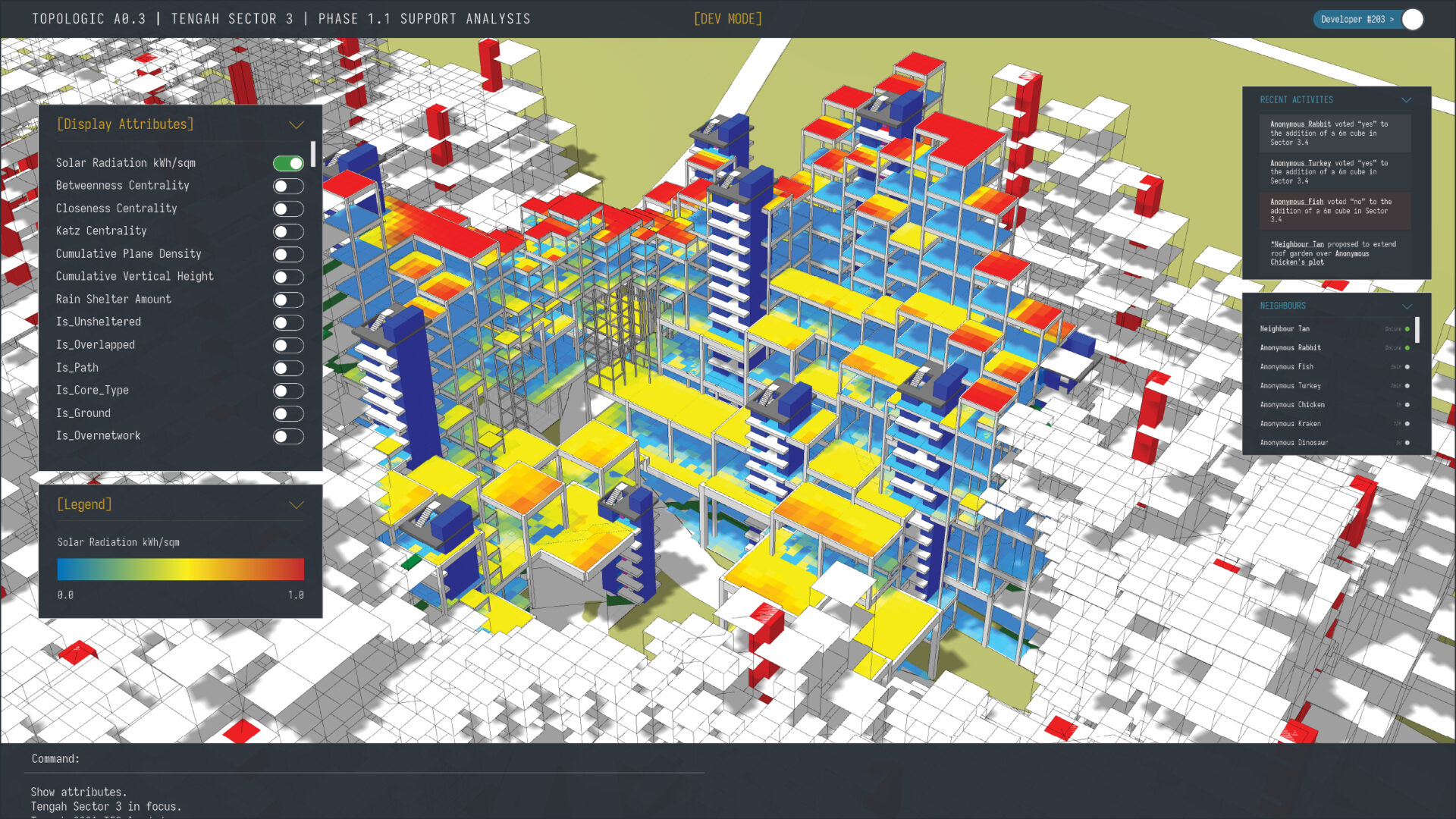
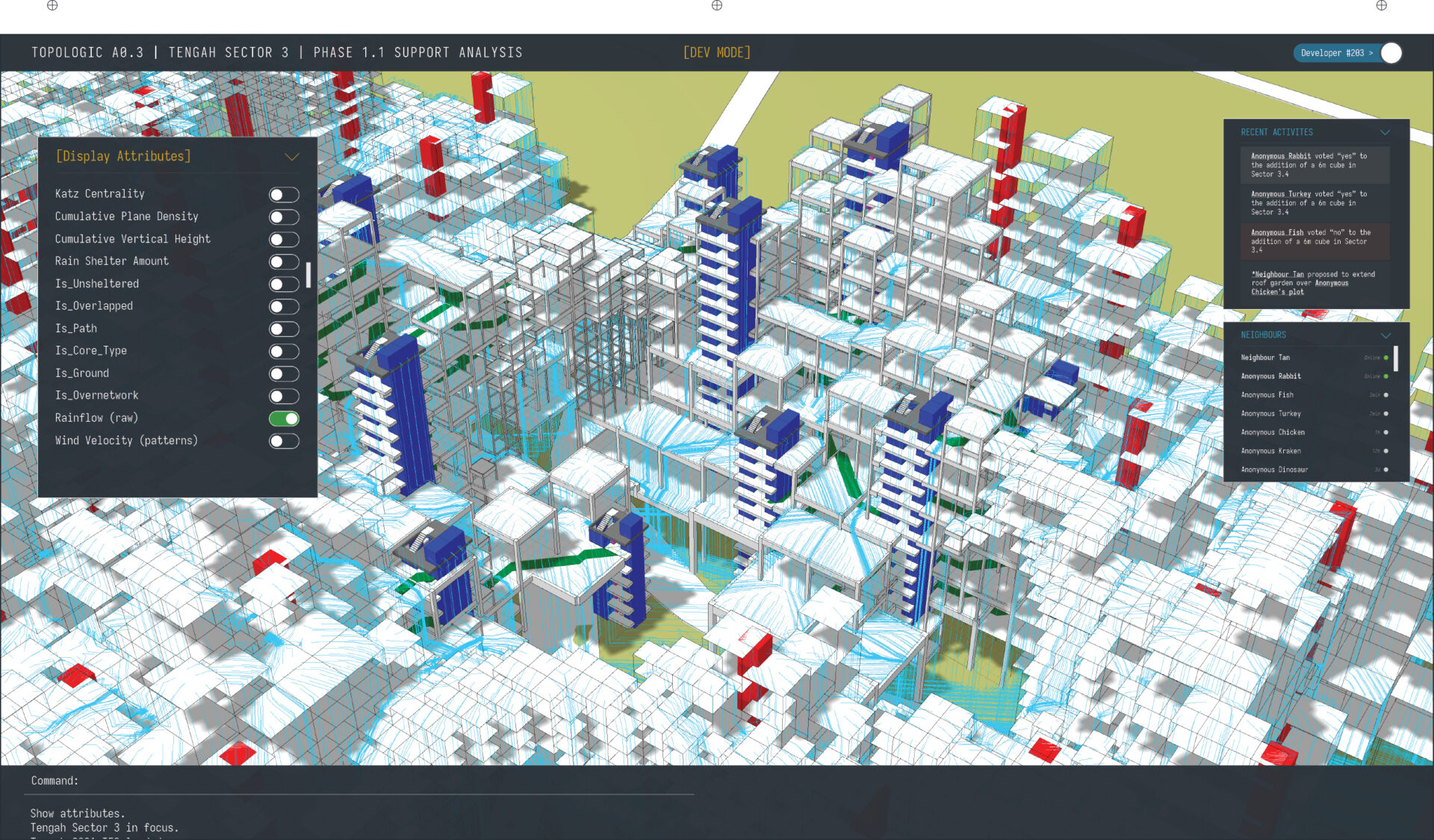

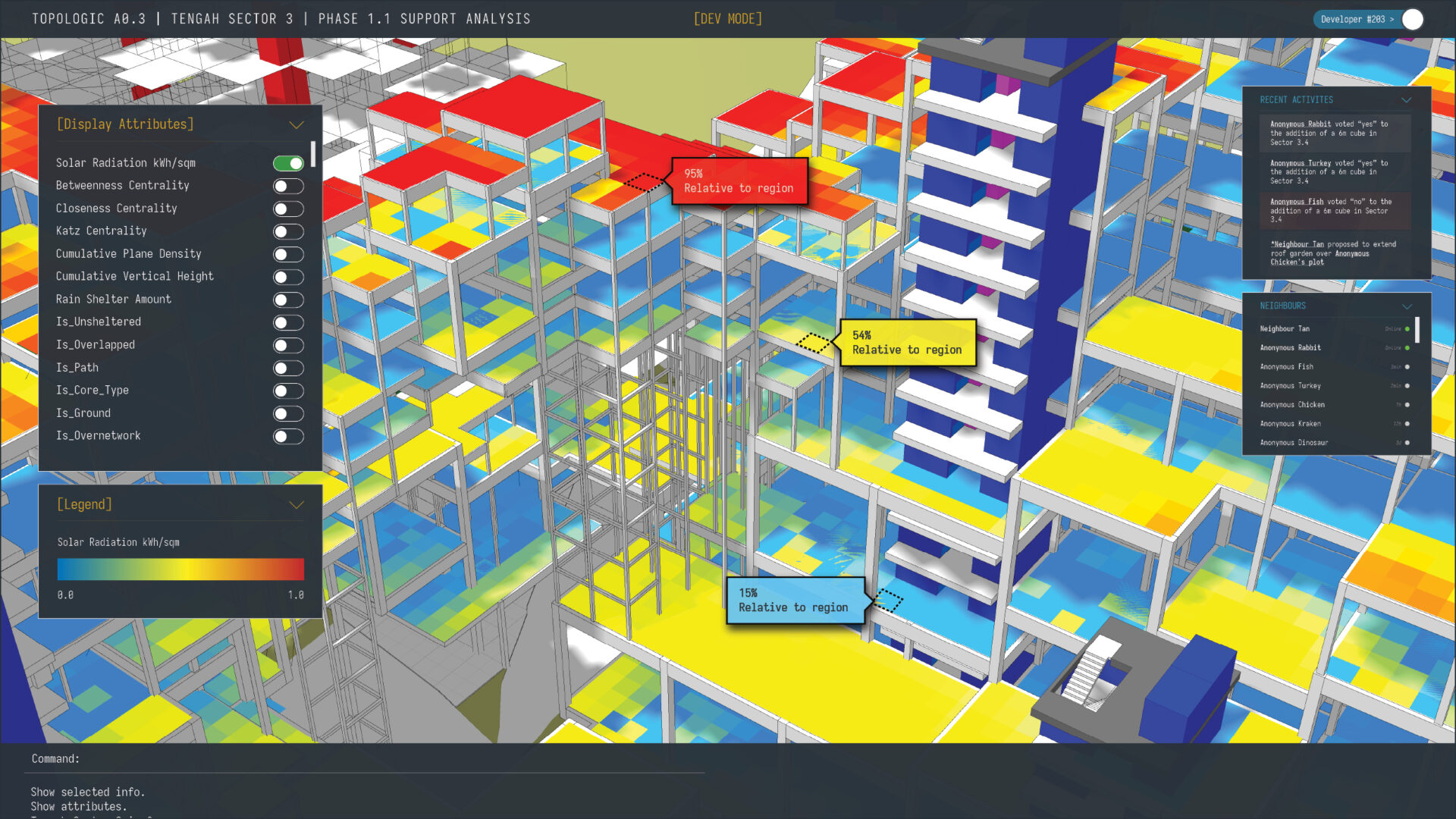
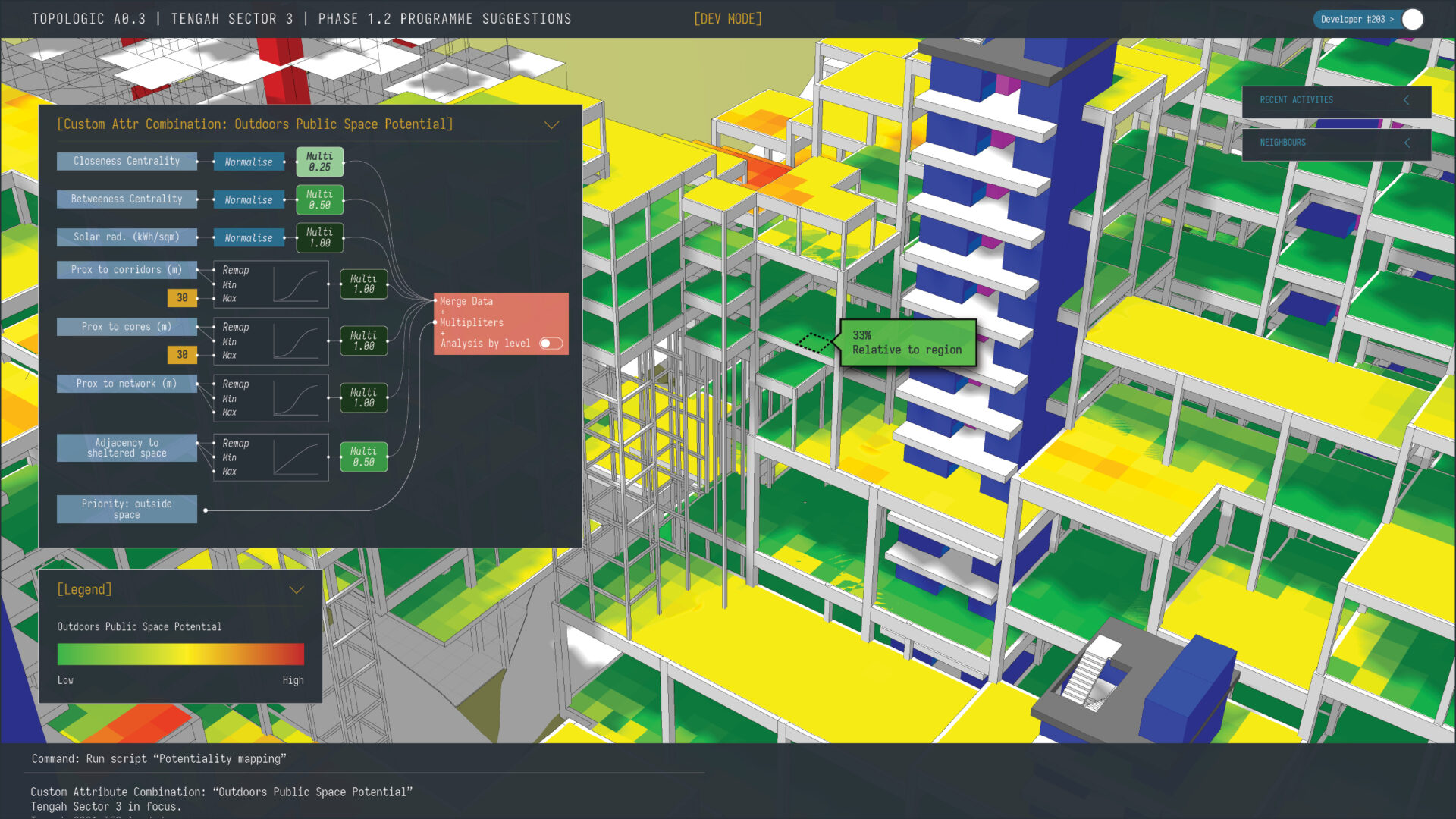
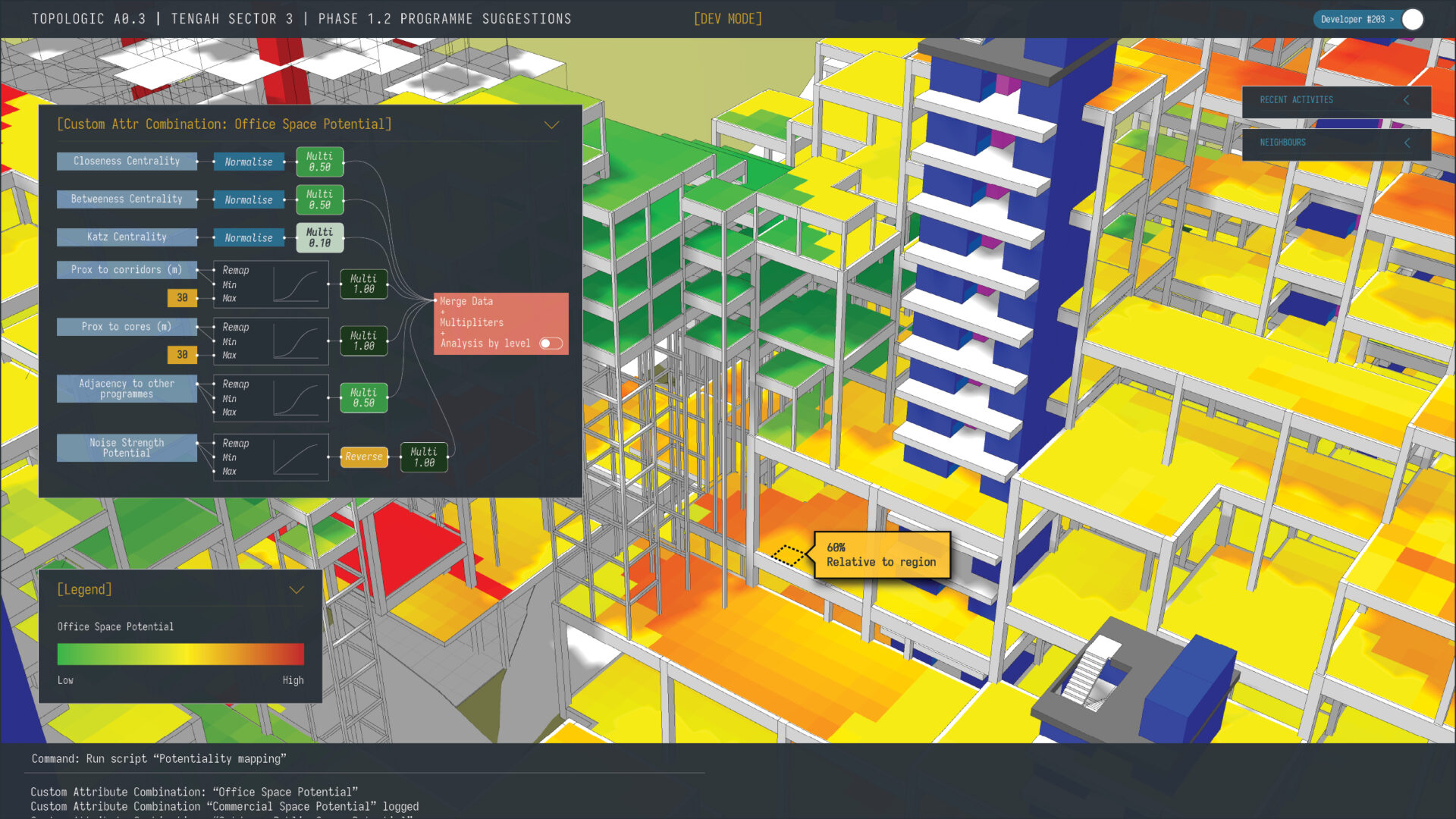
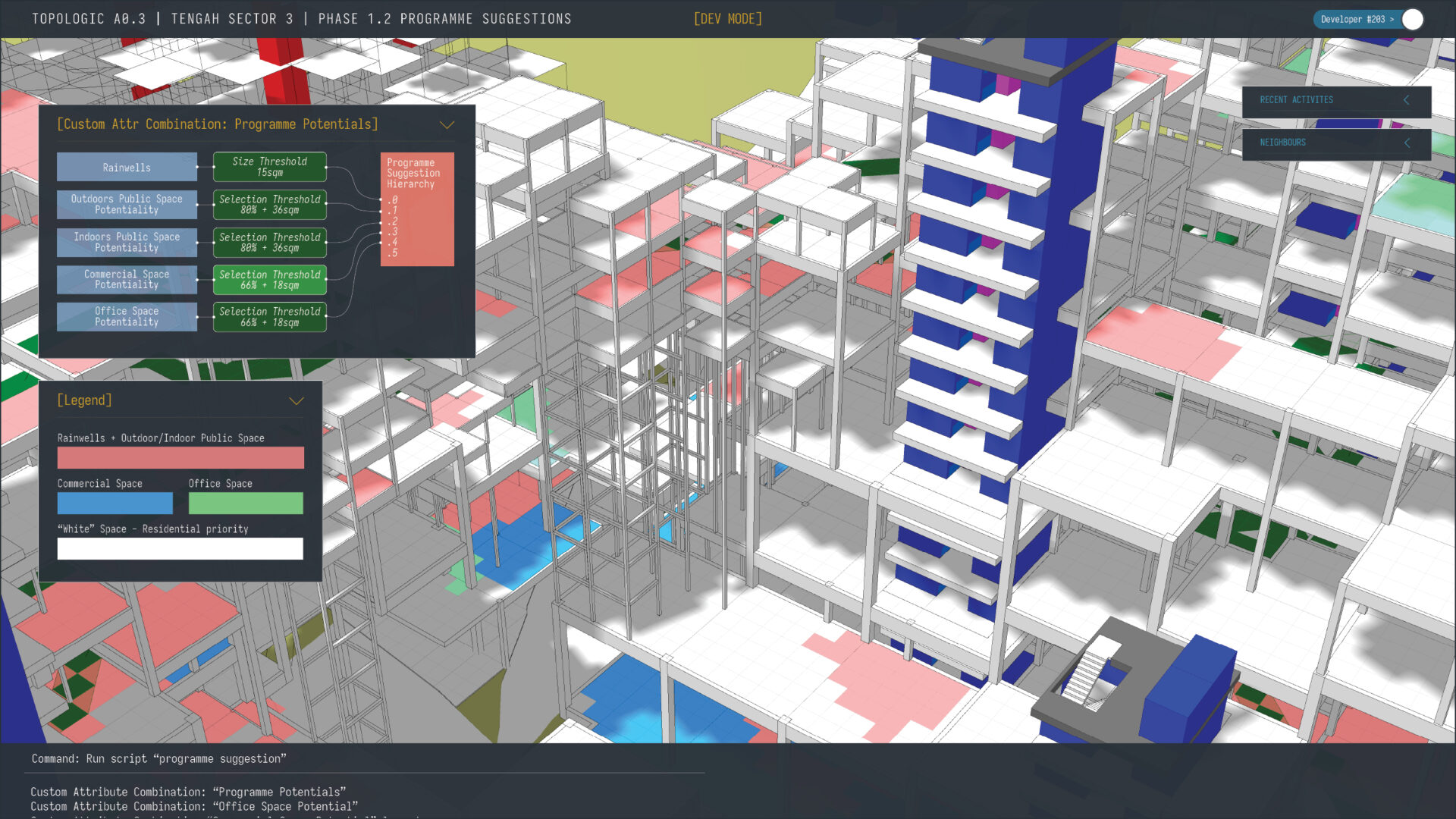

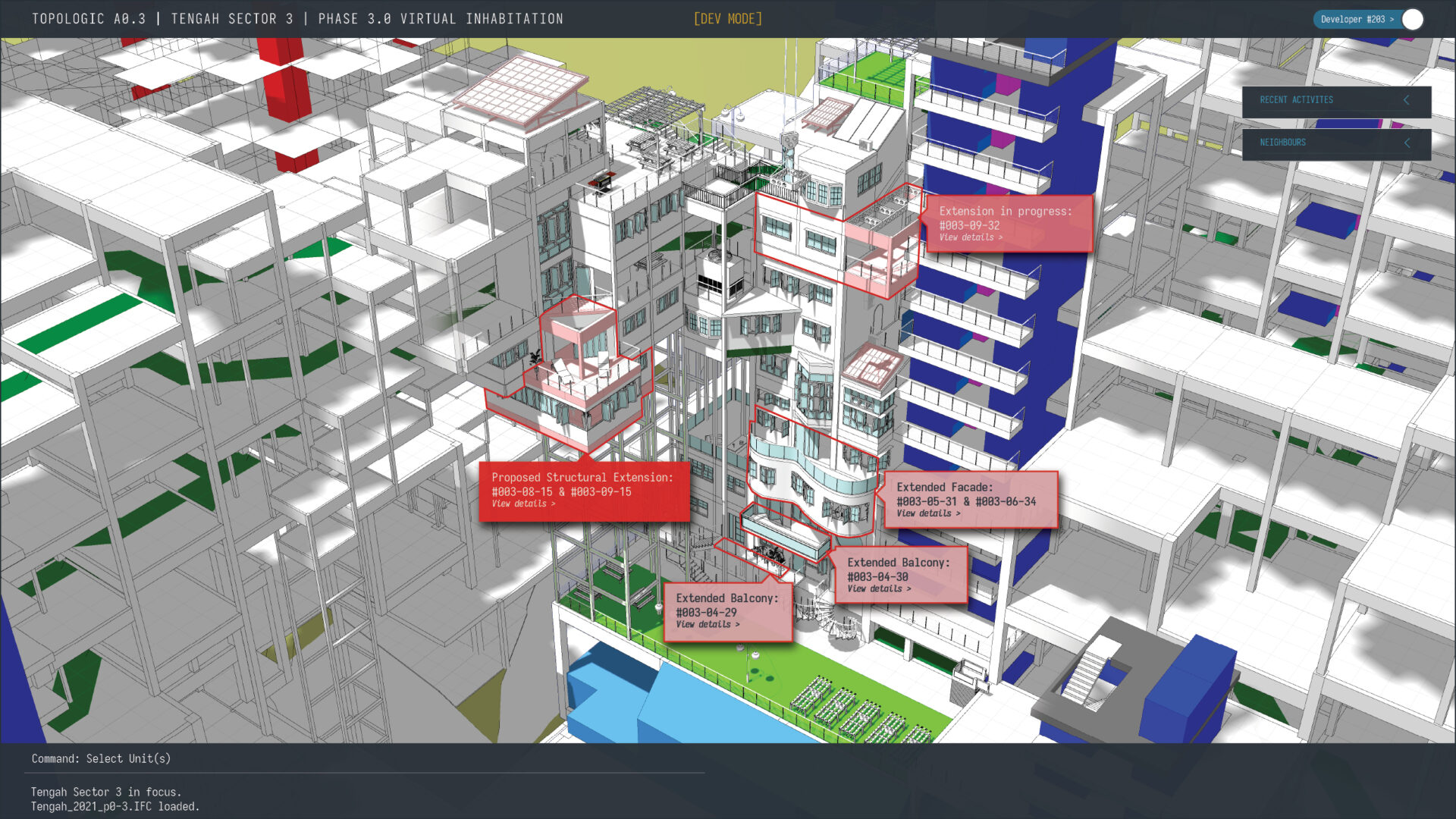


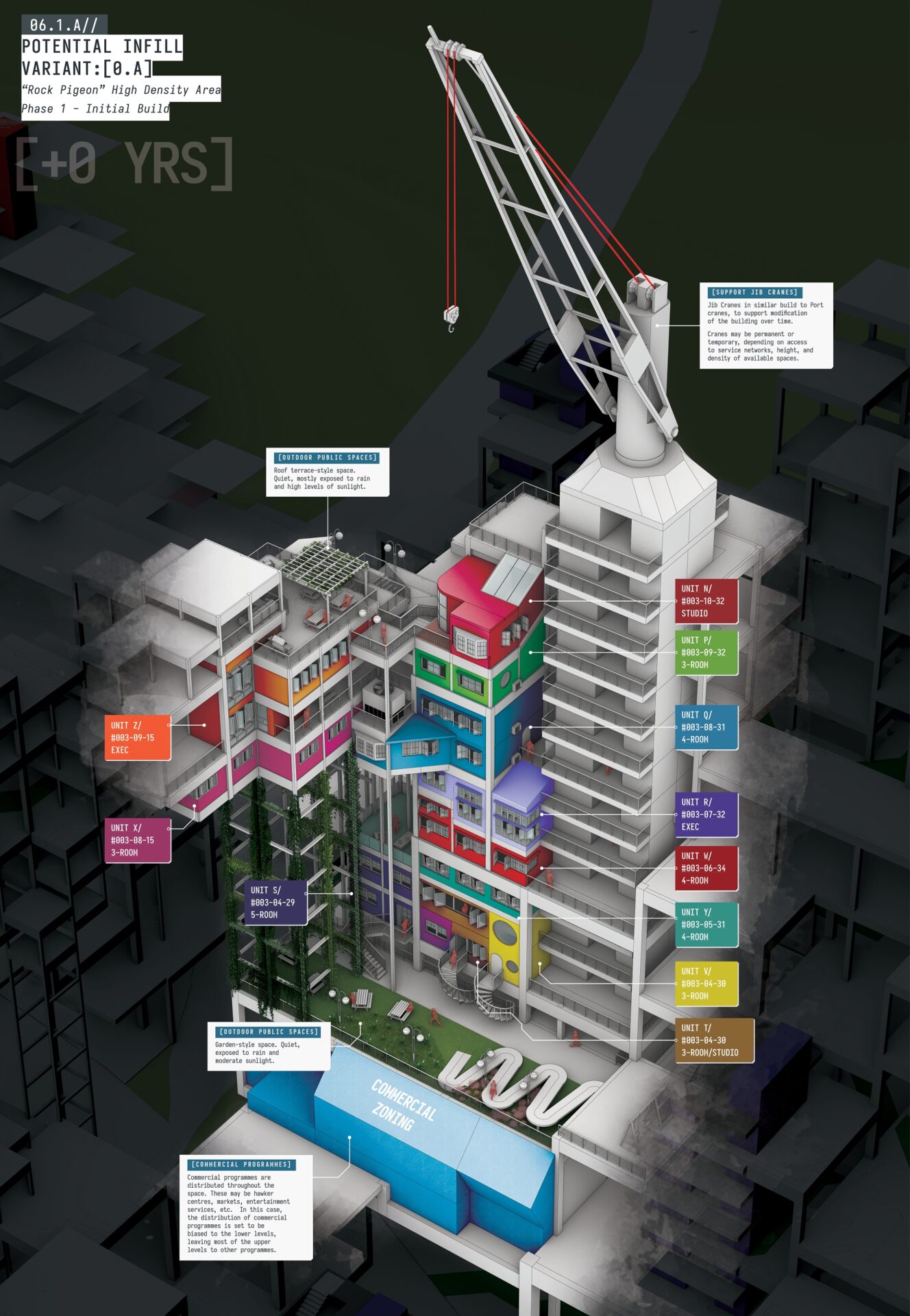
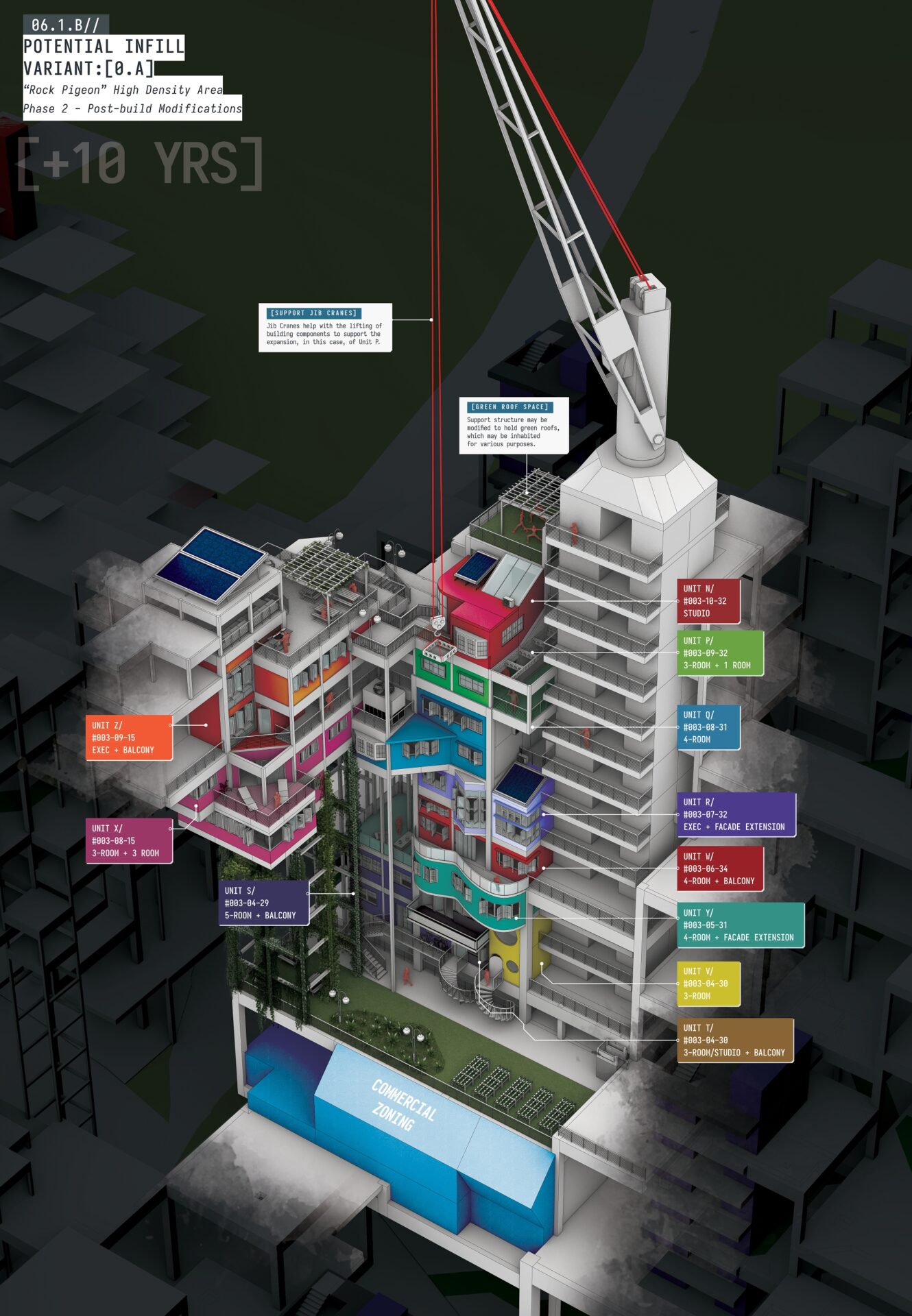
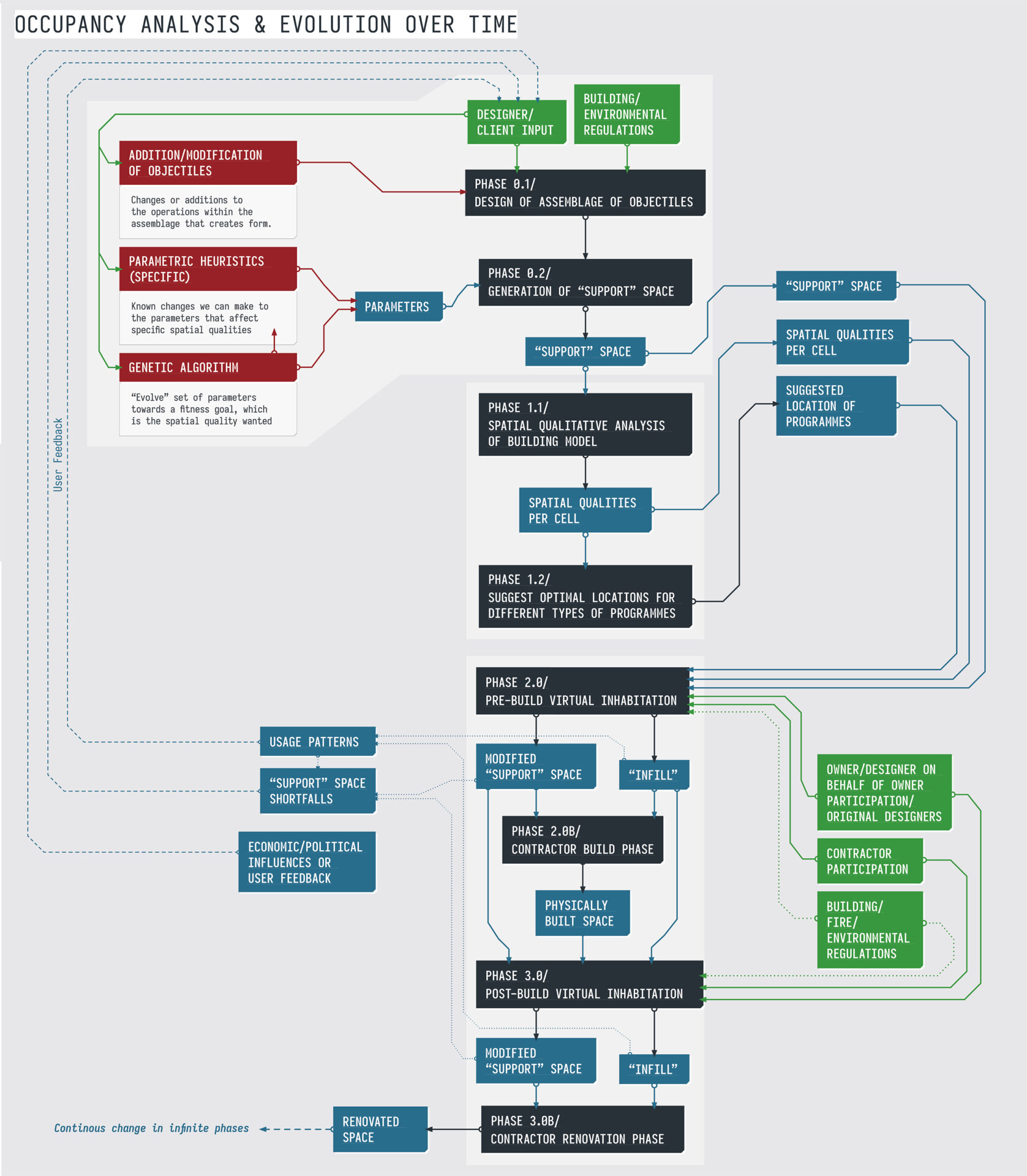
Supervisor's comments:
Computational techniques and algorithms have an important role to play in architectural design, especially when it comes to customization and adaptability. Unfortunately, parametricism as a style has obfuscated the true benefits from computational design. This thesis harnesses parametric variability and mutual adaptability without emphasizing a new esthetic language, instead questioning the overreliance on the domino structure in contemporary architecture. However, more important is its development of a detailed computational design workflow that bridges scales, from the urban landscape to the individual building unit, integrates numerous aspects and phenomena, including sun, water and wind, supports participatory design and bridges design and operation, allowing users to be part of the design and redesign process of their own spaces and the interaction with their neighbors spaces. This computational design workflow is comprehensive, expressive, and articulate.
- Assoc. Prof. Rudi Stouffs (Dr.)